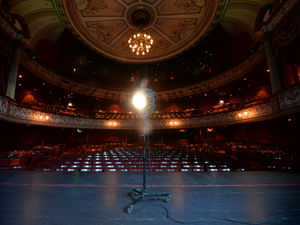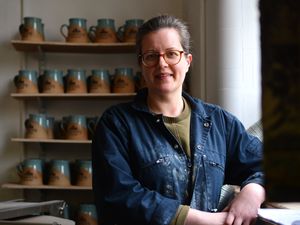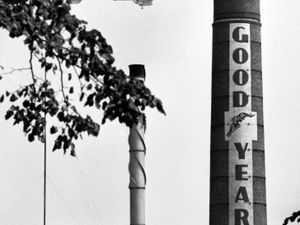Changing way our police are equipped over the years
It wasn't what the civil servants wanted to hear. The first British police officer to test tear gas recommended it should be "used copiously", but would be best used on schoolboys lobbing stones.
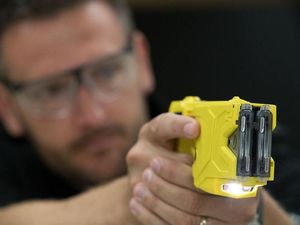
It is 55 years this week since then home secretary Sir Frank Soskice announced police would be armed with tear gas, guns and grenades.
It would mark the start of a policing revolution. Up until that time officers had been expected to defend themselves with nothing more than a 14-inch truncheon. Today officers are equipped with extending batons, Pava spray and Tasers. There are also more police officers armed with guns than at any time in history, although they still only represent about five per cent of the force.
Addressing the House of Commons on May 20, 1965, Sir Frank insisted the chemical would be used only "in dealing with armed criminals or violently insane persons in buildings from which they cannot be dislodged without danger or loss of life".
Sir Edward Dodd, the Chief Inspector of Constabularies, assured the public that "under no circumstances" would it be used for crowd control, and envisaged it would be used only "two or three times a year".
CS gas had first been tested by Col F D Baker, chief of police in Cairo when it was under British rule, in 1936. He concluded it was of little use in his city.
"Gas must be used copiously," he wrote in a report to civil servants, not made public until 2005. "It is only when schoolboys esconce (sic) themselves inside their schools and throw stones from there that the objective can ever be considered stationary."
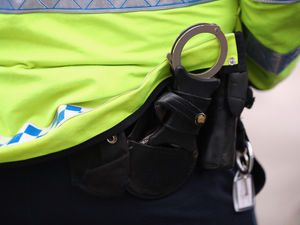
Having considered Baker's advice the British Government decided against using it on the mainland.
But by the early 1960s the debate raised its head again, amid growing concern about the safety of officers in siege situations. A working party recommended police should be issued with the gas in 1962.
But the first time gas was used, it was not for the purposes Sir Frank and Sir Edward had pledged. In August 1969, the Royal Ulster Constabulary launched CS grenades after nine hours of rioting during the infamous Battle of Bogside in Londonderry. The shells were fired just before midnight, scattering a large crowd of youths in all directions, many taking refuge in nearby houses to treat their streaming eyes.
It was not enough. As fighting continued, the British Army was called in to restore order, and would remain there for nearly 30 years. Over the next few years CS gas was regularly deployed by the RUC to break up violent protests, but it would not be used in Great Britain for another eight years.
The first time it was discharged on the mainland came in 1977, when it was used to flush out gunman Frank Stockland during the 'Siege of Trough Gate' in Oldham. The second, more high-profile deployment came in 1981, during the Toxteth riots in Liverpool.
CS gas, then, was a rather a blunt instrument that was rarely used, but the introduction of the safer, more wieldy CS spray proved to be a game changer. Easy to carry and much less harmful, it was routinely used to incapacitate violent suspects. Introduced by home secretary Michael Howard in March 1996, it was used a total of 10,000 times in its first two-and-a-half years.
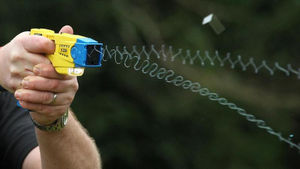
It wasn't without controversy, though. One of the first suspects to be sprayed was Ibrahima Sey, a Gambian asylum seeker who suffered from excited delirium. He died after being restrained with the substance at Ilford Police Station. The mental health charity Mind called for a suspension of its use on people with mental health problems until it was proved to be safe.
The majority of forces in the UK have now switched over to Pava spray, which has similar effects.
Two years before the introduction of CS spray, Mr Howard had also announced the replacement of the traditional 14-inch wooden truncheon with a larger, American-style baton. Their use was short-lived, as officers found them too bulky, and they were quickly replaced by the extending batons used by most forces today.
The big change, though, came in 2003 when the first officers were issued with conducted energy devices, better known by the brand name Taser.
Launched by Nasa researcher Jack Cover in 1974, the name is an acronym for Thomas A Swift Electronic Rifle, in tribute to the inventor's favourite comic book, Tom Swift and His Electric Rifle.
Tasers were initially used by specialist firearms officers in five forces across England and Wales for a 12-month trial, during which time they were fired 13 times. At the time officers were only allowed to use them in circumstances where authorisation to draw weapons had already been granted.
However, their use has grown exponentially over the past decade.
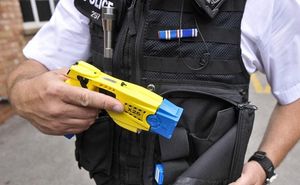
In the 12 months up until March last year, Tasers were used in a record 23,000 incidents, more than double the figure for two years earlier.
Over the same period, officers from West Midlands Police drew their Tasers 706 times and fired them on 112 occasions, while West Mercia Police discharged Tasers 21 times having drawn them on 331 occasions.
While these numbers have led to concerns from civil liberty campaigners, the Home Office and the Police Federation believe they are vital to protecting the public. Earlier this year, Home Secretary Priti Patel made an extra £10 million available to provide a further 10,000 devices.
Many senior police figures want all frontline officers to be equipped with the weapons. They point out that assaults on officers have gone up by 50 per cent over the past two years, and claim Tasers are effective in calming potentially violent situations.
The Police Federation agrees. A recent poll shows 89 per cent of officers want to routinely carry a Taser after being given appropriate training, and that 97 per cent say their colleagues should be allowed to do so.
Amnesty International is not convinced. The campaign group claims 18 people in the UK have died after a Taser was discharged since the devices were introduced.
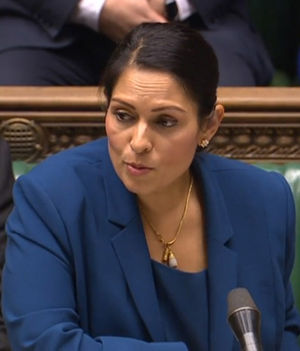
The Independent Office for Police Conduct (IOPC) is investigating four incidents where Tasers have been used. The watchdog body is calling for 'greater scrutiny' of their use.
Director-general Michael Lockwood says while Tasers have a role to play, he is concerned about the number of black men and people with mental health issues they are used against.
Despite these controversies, the UK is still almost unique in that its officers do not routinely carry guns. Staffordshire MPs Michael Fabricant and Sir Bill Cash believe the time has come for officers in rural areas to carry pistols, to tackle the threat of terrorism, gun or knife crime.
West Midlands police and crime commissioner David Jamieson is not convinced.
"Routinely arming as is proposed in rural areas, is something I remain sceptical of," he says. "Moving to an American model of armed policing will do little for public safety.”
This is a debate which is not going to end any time soon.



